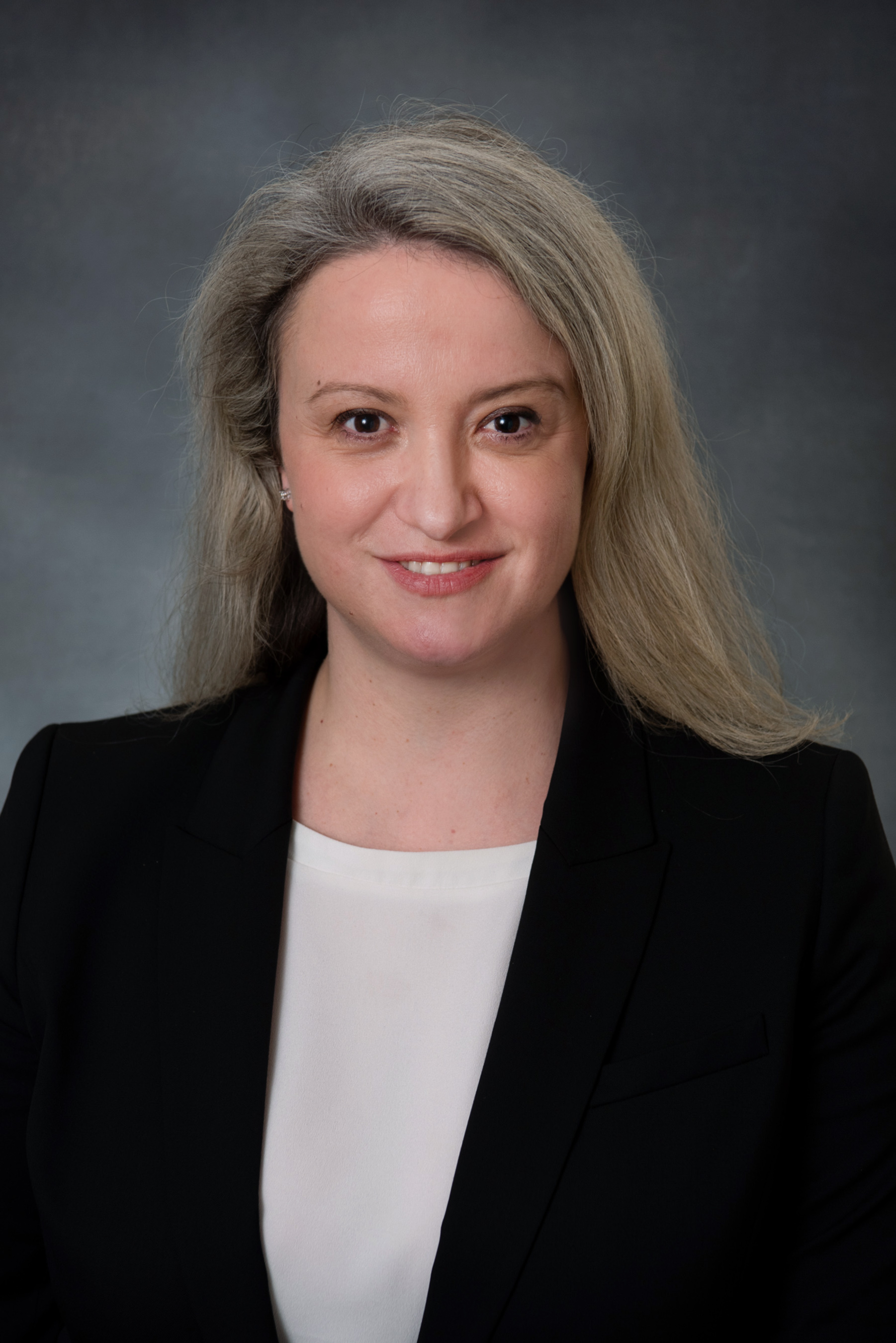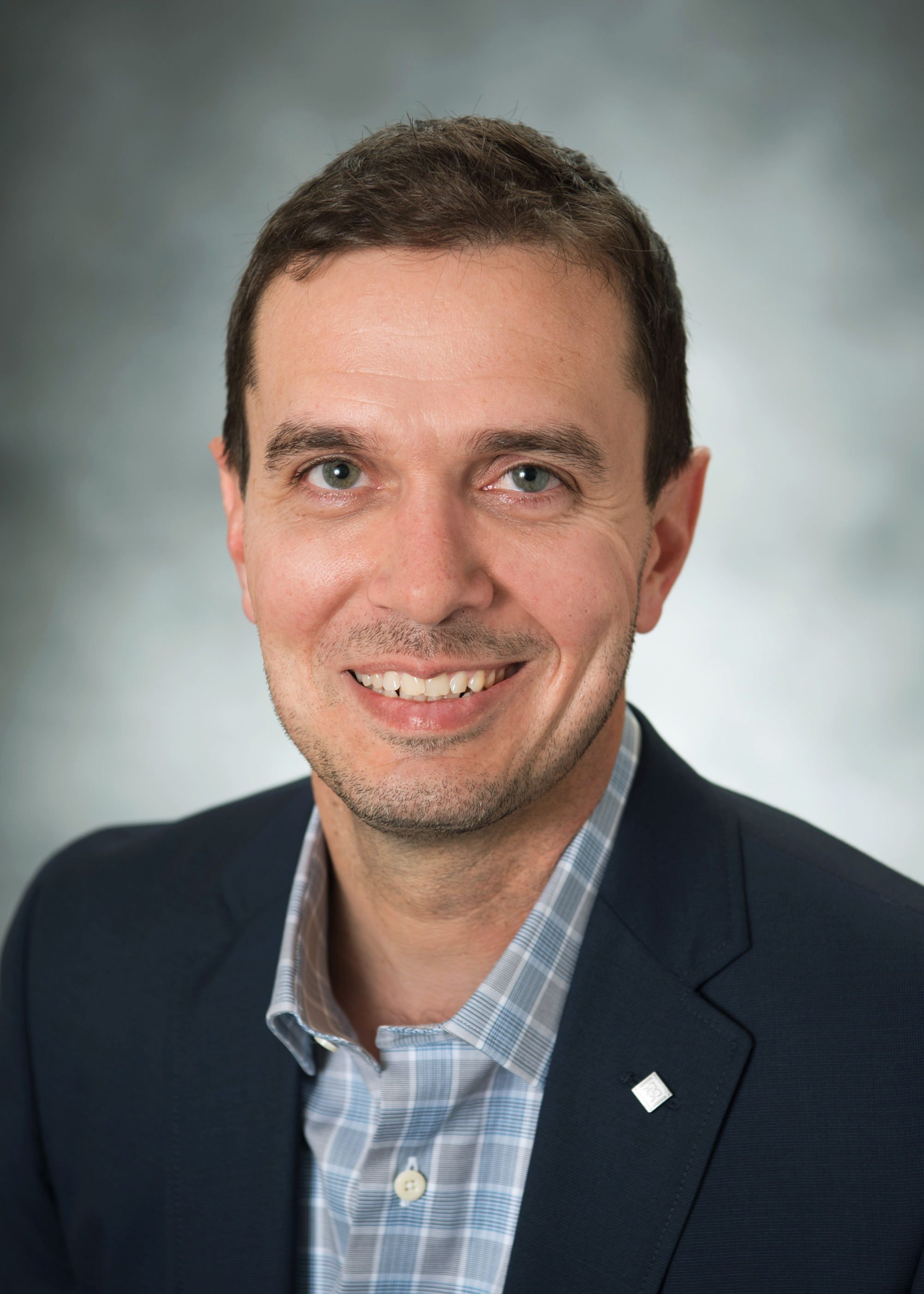Health Connection - February 2022

Change Your Thoughts, Change Your Mood

Many people are plagued by sadness, fear, or worry at some point. While there is often a biochemical aspect, there’s more to depression and anxiety than brain chemistry. Negative thought patterns and unhealthy behaviors can both create and perpetuate these mental states. Fortunately, we can learn to identify and overcome these patterns and behaviors through Cognitive Behavioral Therapy, or CBT.
Cognitive Component of CBT: Overcoming a Vicious Cycle of Sadness When we are depressed or anxious, we tend to have negative, judgmental, and self-defeating thoughts like “I’m not good enough.” “I’m a failure,” or “I’ll never get what I want out of life.” Such thoughts make us feel even more depressed, creating a vicious cycle of sadness that can be extremely difficult to break. The good news is these distorted, negative thoughts can be changed and corrected.
How does such a negative cycle develop? When we are depressed, we tend to focus on all the things in our lives that are not working and block out those that are. This distorts our perception of reality, as though we are looking at the world through dark-tinted glasses.
Cognitive Behavioral Therapy helps us remove the dark glasses and see ourselves and our lives more realistically. Developed by Dr. Aaron Beck, Dr. Albert Ellis, and Dr. David Burns (among others), CBT is based on the idea that recognizing distorted thinking can help us think more rationally and realistically to vastly improve our moods. The first step is learning to identify negative thought patterns. In his book Feeling Good: The New Mood Therapy, Dr. Burns describes 10 types of typical thinking errors that almost everyone makes sometime. For people who are depressed and/or anxious, negative thoughts can permeate their thinking process.
Below are three of the most prominent thinking errors Dr. David Burns identified:
Discounting the Positive: Someone pays you a compliment like, “You really did a good job on that project.” Instead of feeling good about it, you brush it off, saying, “Oh, anyone could have done that.” Or you think, “Gosh, if that person really knew what they were talking about, they would see that I didn’t do such a good job.” This is the kind of distorted thinking that keeps you feeling bad.
Fortune-telling: You think you can see the future and it’s going to be bleak. You dissuade yourself from asking someone out because you assume they will say no. Or you don’t apply for a job because you’re certain you won’t get it. The truth is no one has a crystal ball. Fortune-telling is a distortion that causes unnecessary suffering.
Mind Reading: You convince yourself that people are thinking negatively about you. Walking down the hallway at work, you pass your boss and say hi. She hurries past without acknowledging you. You tell yourself, “She’s mad at me. She didn’t like the report I wrote. Maybe I will get fired and end up homeless.” Meanwhile, your boss may simply have been preoccupied and not noticed you. After learning to identify negative distortions, the next step is to challenge them. Dr. David Burns established a variety of techniques to do just that. In my therapeutic practice, I tailor these techniques to the needs of each individual patient.
Examine the Evidence: A patient I'll call Greg suffers from depression. He has the core negative beliefs that he is "not good enough" and a "failure." When I asked for evidence to support these beliefs, Greg revealed that his father had repeatedly called him a "good for nothing failure." He also brought up how his high school girlfriend had broken up with him, years ago. When I probed for more information, it turned out his father was a depressed, volatile man who suffered from addiction. Angry, depressed people can be irrationally hard on themselves and others, while addicts often project blame rather than looking at themselves. Thus, the fact that Greg's father passed this negative judgment on him is not good evidence that it is true. As for the high school breakup, it turned out that the girlfriend would be attending college on the other side of the country and didn’t think a long-distance relationship would work out. Neither situation had anything to do with Greg’s inherent value.
Depressed people often ignore supportive evidence and may need the help of a trained therapist to unearth it. Questions about academic, professional, and personal accomplishments usually reveal strengths that a person may have overlooked or discounted. After dropping out of high school, Greg went back and ended up graduating from college near the top of his class. Later, he wisely left a career that did not suit him and found one that did, rising to the position of manager. Greg is also reliable in his relationships with his friends and spouse. However, he has difficulty standing up for himself and asserting his needs in interpersonal relationships.
Over time, Greg was able to modify his thought patterns, telling himself, “I have persistently and successfully pursued my goals. I am a dependable partner and friend, and I am learning to assert my needs in relationships.” To reinforce these balanced, realistic thoughts, Greg needs to repeat them daily until they become a habit.
The Socratic Method and Thinking in Shades of Grey: When people are depressed, they think in rigid, all-or-nothing terms. As an example of his perceived inadequacy, Greg mentioned that he had been late for work. When I asked for specifics, Greg said he had been late twice, once by 10 minutes and another time by 20. I then asked how many years he had been at his job. He told me 15 years. I said, "So, you have been working at your present job for 15 years and you have been late two times? How often are your coworkers late?” It turned out many of Greg’s coworkers were late much more often than him–sometimes by 30, 45, or even 60 minutes. Greg began to see that being late twice in 15 years hardly made him "not good enough" or a "failure."
Double Standard Technique: Depressed people are often very self-critical and treat themselves more harshly than they would a loved one. I had Greg name someone he really values and asked how he would react if that person told him that they were a "failure" for being late to work twice in 15 years. Greg admitted he would say that is perfectly normal.
Behavioral Component of CBT: Concrete Steps to Wellness How we act affects how we feel and how we feel, in turn, affects how we act. When depressed, people cut themselves off from the support of friends and loved ones and are much more susceptible to the distortion and negativity of depressed thinking. Additionally, they tend to forgo healthy, pleasurable activities. They may stop exercising, eat poorly, and overindulge in drugs or alcohol. These behaviors increase depression and make people feel worse about themselves.
It’s essential to reduce or eliminate unhealthy behaviors and increase healthy activities. Exercising, maintaining a balanced diet, doing things you enjoy, and spending time with supportive people all help improve mood and boost self-esteem. This is best accomplished by setting realistic, measurable weekly goals. For example, if the larger goal is to improve your marriage, a weekly goal might be to plan a date night, or have dinner at the table instead of in front of the TV.
Another way to feel better about yourself and your life is to practice gratitude–focusing on what we have, such as good health, a job and a place to live, friends and family, creative talent, or the natural beauty that surrounds us. Opening up to the gifts in our lives can lead to more positive thoughts and mood.
Depression and anxiety and the distorted thought patterns they create can be overcome. By identifying, challenging, and changing cognitive distortions, we can find our way to joy and fulfillment.
Ted Vander Clute is a Licensed Clinical Social Worker who sees patients at MarinHealth Psychiatry | A UCSF Health Clinic in Novato.
Heart News: New Cholesterol Targets and Heart Risk Enhancers

It’s heart month and there’s a lot of news to share on cholesterol targets, risk enhancers for women, and a pioneering new Women’s Heart Program in the works at MarinHealth®.
Let’s start with the cholesterol guidelines and an important update for both genders. In November 2018, the American College of Cardiology and the American Heart Association released new guidelines that are changing the standard of care for patients with elevated cholesterol levels.
In the past, doctors have treated elevated low-density lipoprotein (LDL) levels with the goal of reducing LDL levels to a specific target. The new guideline calls for repeat lipid testing only to confirm statin compliance. Once a person has been diagnosed with arterial plaque, the new guidelines recommend lifestyle changes and the use of high-intensity statins to reduce levels of “bad” cholesterol (LDL-C). The goal is to lower LDL-C levels by 50 percent or more. Those for whom high-intensity statins are recommended include:
- Adults diagnosed with atherosclerotic cardiovascular disease (ASCVD), including coronary artery disease, peripheral artery disease, and transient ischemic attack or stroke
- Adults aged 40 to 75 with diabetes
- All adults, regardless of age, with an LDL above 190
- Adults aged 40 to 75 whose LDL is between 70 to 189, and whose risk of ASCVD is 7.5 percent or higher over a 10-year period.
For adults over the age of 75 who DO NOT have a diagnosis of ASCVD, a more conservative approach may be recommended. Be sure to ask your doctor whether the new guidelines should impact your healthcare regimen.
Risk Enhancements Specific to Women
By now, you are probably aware of the general risk enhancements for heart disease in both sexes. Some can’t be changed, such as age or family history. Others can be reduced through lifestyle adjustments like quitting smoking, cutting back on alcohol consumption, losing weight, exercising regularly, and eating a heart-healthy diet. But there are additional risk enhancements specific to women that may increase the likelihood of suffering a heart attack or stroke over time:
- Polycystic Ovarian Syndrome (PCOS) is a hormonal disorder that can cause hair loss, excess facial and body hair, menstrual irregularities, obesity, high blood pressure, and insulin-resistant diabetes.
- Peripartum Cardiomyopathy is a rare weakness of the heart muscle that can occur between the final month of pregnancy and five months after delivery. It is most common right after delivery.
- Takotsubo Cardiomyopathy, also known as broken-heart syndrome, is most common in women aged 58 to 75. This is a weakening of the left ventricle that usually occurs during a time of severe emotional or physical stress, such as the death of a loved one, a sudden illness, an accident, or natural disaster. The main symptoms are chest pain and shortness of breath. Research suggests that up to 5 percent of women suspected of having a heart attack actually have this disorder. Most women recover with no long-term heart damage.
- Preeclampsia is a sudden, dangerous rise in blood pressure in women whose blood pressure had previously been normal. In addition to high blood pressure, symptoms include protein in the urine and swollen legs from water retention. This is a serious, life-threatening condition for both mother and baby.
- Gestational Diabetes occurs during pregnancy in women who did not have diabetes before they conceived. Gestational diabetes usually goes away after a woman has given birth. However, once a woman has had gestational diabetes, she is more likely to get it again during a future pregnancy. She is also at risk for developing diabetes as she gets older.
A New Heart Safety Program Just for Women
Cardiovascular disease is the top cause of death in women in the U.S.–more than all cancers combined. What’s more, compared to men, heart attacks in women often present with unique symptoms such as light-headedness, shortness of breath, neck and jaw pain, nausea and vomiting, and stomach and arm pain. Women often minimize these symptoms, not realizing that they are in fact having a heart attack. This is why it’s crucial to raise awareness of risk and symptoms and identify women with risk enhancements as early as possible.
MarinHealth is developing a program focused on the prevention and early identification of heart health concerns for women, primarily between the ages of 40 to 65. We will also work to identify and educate younger women who develop preeclampsia, gestational diabetes, or peripartum cardiomyopathy. This effort will promote collaboration between primary care physicians, OB/GYNS, and cardiologists to establish ongoing monitoring of women with risk enhancements for heart disease. Learn more about cardiovascular services at MarinHealth.
Women will work with a patient navigator and be referred to specialists and a dietician, as needed. The program will track the women’s health over time, providing appropriate testing and monitoring. Where appropriate, we will also offer opportunities to participate in clinical trials.
We look forward to launching this program as part of our Haynes Cardiovascular Institute some time within the next 12 months. In the meantime, learn more about women and heart health by listening to this short podcast.
Dr. Ines Sherifi is a Cardiologist at MarinHealth Cardiovascular Medicine | A UCSF Health Clinic.
Sports Medicine: It's Not Just for Athletes

Which statement do you think is true?
A: Sports medicine physicians are all orthopedic surgeons.
B: Sports medicine physicians are primary care doctors, not surgeons.
Whether you answered A or B, you’re only half right. Both are true because there are two kinds of sports medicine specialists, each with a different type of expertise.
Two Kinds of Specialists
- Orthopedic surgeons, board-certified in orthopedic surgery, have the option to be fellowship-trained for board certification in a variety of orthopedic subspecialties, one of which is sports medicine. An orthopedic surgeon’s focus is treatment. In other words, this is the doctor you see AFTER you get injured. Depending on the type and severity of an injury, an orthopedic surgeon will prescribe a range of treatments. Noninvasive modalities include anti-inflammatory medication, physical therapy, and cortisone shots. Sometimes minimally invasive arthroscopic surgery is needed to fix tendon or ligament injuries or remove bony spurs. If an injury involves an arthritic or damaged joint, joint replacement may be the best course of action to improve function and eliminate pain. Learn more about the comprehensive orthopedic services at MarinHealth®.
- Primary care physicians (PCPs) are board certified in internal medicine, emergency medicine, family medicine, physical medicine/rehabilitation, or pediatrics. To become a sports medicine physician, a PCP must be fellowship-trained in sports medicine and pass a national certification examination. This includes the non-musculoskeletal aspects of sports medicine, such as concussion and head injuries, injury prevention, and return-to-play decisions. This is the kind of doctor who works with sports teams, dance companies, high schools and universities, and professional, amateur, and occupational athletes. These sports medicine doctors can prescribe noninvasive treatment, but if a minimally invasive or invasive surgical procedure is needed, they refer the patient to an orthopedic surgeon.
Not Just for Athletes
Another common misconception is that sports medicine physicians only work with amateur and professional athletes. This is not true of either type of sports medicine physician. Ultimately, sports medicine is about protecting and preserving the ability to move as well as possible, without pain. A competitive cyclist and a person who just uses their bike as neighborhood transportation can develop the exact same injury, requiring the exact same treatment. A professional baseball player and a construction worker can both suffer the same rotator cuff problem requiring minimally invasive surgery. Likewise, while an internist with a subspecialty in sports medicine is well qualified to work with a dance company or professional sports team, that doctor can also help an overweight person start an exercise program that will work for their lifestyle and fitness level.
Common “Sports” Injuries
The injuries an orthopedic surgeon sees most frequently are soft tissue injures, usually of the shoulder or knee, involving the ligaments, tendons, or cartilage. Some of the most common problems include meniscus and rotator cuff tears, ACL issues, impinged shoulders, and repetitive motion injuries like tennis or golf elbow. Injuries like these can certainly occur while hauling four bags of groceries up the stairs, reaching for something on a high shelf, or tripping while walking the dog. However, often sports are indeed the cause, largely because people overdo it. For example, a self-described couch potato signs up for boot camp and pushes too hard. An older bicyclist tries to keep up with a peloton half his age. A weekend warrior literally only works out on the weekend and neglects to warm up before playing sports. If you’ve resolved to get more active this year, good for you. Just make sure to do so mindfully and ease into your new routine.
Working Out Over 40
We all want to look and feel our best, but the truth is we’re just not as limber and resilient in middle age as we were in our twenties. To avoid sports injuries and stay healthy and strong, consider switching to low-impact exercise. Instead of running, try hiking, biking, or swimming, which are easier on the joints. Rather than lift heavy barbells at the gym, consider yoga or Pilates, both of which build muscle and flexibility. Better to work out safely and regularly than risk a sports injury that could set you back for months. Learn more about preventing and treating knee injuries by listening to this short podcast.
Dr. Eric Bava is an Orthopedic Surgeon at MarinHealth Orthopedics | A UCSF Health Clinic.
Jin Shin Jyutsu: An Ancient Healing Art for Today's World
Over the past 25+ years, it has been my privilege to help people with a variety of life and health issues through the healing arts. In health conscious Marin County, many of the healing arts, Tai Chi, yoga, acupuncture, massage, Reiki, meditation, etc., are at the very least familiar names, and to a great many, a vital path to healing and a return to wellness.
One of these techniques is Jin Shin Jyutsu,® an ancient Japanese healing art that focuses on harmonizing the life energy in the body using the hands and breath. Jin Shin Jyutsu energizes the body, mind, and spirit, which supports the body’s innate ability to heal when in balance. Jin Shin Jyutsu has thousands of students, practitioners, and followers throughout the United States and around the world.
What is Jin Shin Jyutsu?
Jin Shin Jyutsu seeks to restore health and energy to the body by unblocking and balancing the vital life force energy through gentle hand pressure on the body’s many energy pathways which feed energy into all cells and organs. When one or more of these paths become congested through the stresses of daily life, it may lead to discomfort or even pain. This congestion or stagnation can not only disrupt the local area but will continue and could eventually disharmonize the complete path or paths of the energy flow.
What Happens in a Jin Shin Jyutsu Session?
In a typical Jin Shin Jyutsu session, which lasts about one hour, the receiver remains fully clothed and lies face-up on a cushioned surface. After “listening” to the energy pulses in the wrists, a practitioner employs a hands on harmonizing sequence, or “flow,” a series of hand placement combinations on specific areas of the body called “safety energy locks” that stimulate circulation of energy. The hands are like “jumper cables,” gently restarting the flow of energy. There are no needles, deep pressure, or rubbing. Similar to gentle acupressure, Jin Shin Jyutsu uses light pressure.
After a session, the most commonly reported response is a significant reduction in stress and a feeling of deep and profound relaxation. Suggestions may be given for practicing self-help between sessions to continue the benefits.
How Can Jin Shin Jyutsu Help Me?
What people experience with Jin Shin Jyutsu is unique to each individual and to each session. In my work with cancer patients, I often see them being able to better manage chemo, surgery, and radiation side effects as well as anxiety, depression. They often have more energy, sleep better, and see improvement in their moods as they continue receiving Jin Shin Jyutsu sessions and practicing self-help. I have also seen Jin Shin Jyutsu to be effective with heart health, dementia, diabetes, Lyme disease, respiratory disorders, fatigue, pain, Parkinson’s disease, nausea, symptoms brought on by stress, insomnia, anxiety, negative side effects of medication, and much more.
Jin Shin Jyutsu is a valuable complement to conventional healing methods to restore and maintain health. It has been my privilege to share Jin shin Jyutsu with patients and the community and to hear and see firsthand the positive results this ancient healing art has had on their lives.
How Can I Learn More?
Jin Shin Jyutsu is available right here at MarinHealth® Integrative Wellness Center. MarinHealth Medical Center is one of only a few hospitals in the country offering this service in a medical environment.
Jin Shin Jyutsu is available to both patients and members of the community who are looking to optimize their health and total sense of well-being. We also spend time during the hour practicing self-help.
If you would like to learn more about how Jin Shin Jyutsu can be of benefit to you, visit www.mymarinhealth.org/IWCvideos to watch class recordings at or call 1-415-925-7620 to schedule a one-on-one session.
